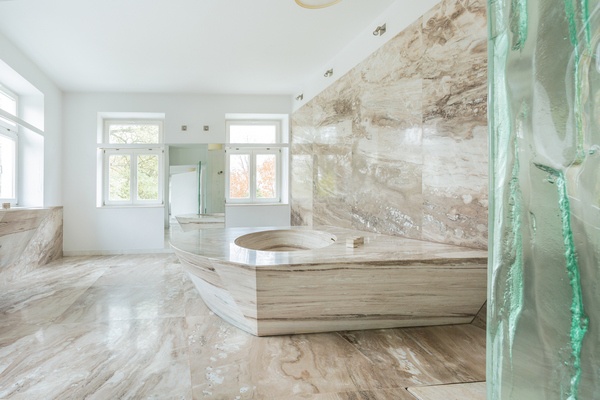How Much Does It Cost to Polish a Stone Floor?
Stone floors are naturally beautiful and durable. They are available in a wide range of hues, styles, patterns, sizes, and finishes. A polished stone entryway, bathroom, or kitchen creates a lasting impression. Also, the durability of the stone flooring is undeniable. When cared for properly, it will last years. However, even with the best of maintenance, your stone floor might lose its shine over time. Luckily, you can easily polish a stone floor through a grinding and rebuffing process to create a high-glass finish.
The average cost to polish a 200 sq. ft. marble stone floor costs from $600 to $1,000, with the average being $800. At the low end of the spectrum, you will pay $400 for basic polishing of 200 sq. ft. If you have to buff and polish small scratches or imperfections out of the surface while polishing, then you can expect to pay around $800. If the floor needs grinding, buffing, and polishing, then it may cost up to $1,800 at the high end.
Cost of Stone Floor Polishing
| Stone Floor Polishing Cost | |
|---|---|
| National average cost | $800 |
| Average range | $600-$1,000 |
| Low-end | $400 |
| High-end | $1,800 |
Stone Floor Polishing Cost by Project Range
Stone Floor Polishing Cost by Stone Type
The average cost to buff and polish a stone floor ranges from $2 to $8 per sq. ft. However, some types of flooring might not polish as well. Softer stones, like limestone and sandstone, can only be polished to a shine that is referred to as a “high hone” or soft sheen, which is basically a very low gloss. Harder stones, such as granite, typically respond well to a high degree of polishing. Some stones such as granite and terrazzo respond well to a high hone instead of polishing, so they really only ever achieve a matte finish. Always ask the stone polisher or manufacturer to determine if your stone flooring is a naturally matte finish before applying any polish treatment to its surface.

| Stone Type | Cost of Polishing per Sq. Ft. (Materials and Labor) |
|---|---|
| Marble Floor | $2 - $3 |
| Limestone Floor | $2 - $3 |
| Travertine | $2 - $3 |
| Slate Floor | $2 - $3 |
| Granite | $3 - $5 |
| Terrazzo | $3 - $8 |
Cost to Polish a Marble Floor
Marble flooring can be successfully polished for an average cost of $2 to $3 per sq. ft. The process involves cleaning the stone’s surface, removing any stains using acid chemicals for marble floor stain removal. A special suction vacuum then sucks up the chemicals, dirt, grime, and oil. Following the stain removal, the floor is buffed with steel wool and polished using sanding 1 discs, polishing pads 2, and additional chemicals that bring out the floor’s shine. The process is known as crystallization.
Many floors look like natural marble. However, they are made from cultured marble, a combination of limestone dust, polyester resin, fillers, and pigments bound together to look like stone and then covered in a clear gel coat. Imitation marble cannot be polished in the same manner as real marble. Instead, a fine sandpaper must be used to remove scratches and create shine. The cost is the same to polish such flooring even though the process is different.
Limestone Floor Polishing
The average cost of limestone 3 floor polishing is about $2 to $3 per sq. ft. Limestone is a sedimentary rock that has a naturally smooth surface that is slightly granular. You can polish limestone, but it will never have the outstanding shine you obtain with marble or granite. The process to polish limestone involves using a mild cleaner on the stone’s surface. Soft buffing pads are used to make the flooring gleam. However, if the flooring has severe scratching, then crystallization can be used just like with marble polishing.
Travertine Polishing Cost
The average travertine polishing cost is $2 to $3 per sq. ft. It is a popular flooring for indoor and outdoor use because of its durability and wide array of colors. It maintains a nice like-new luster with very little effort. The flooring can be easily polished. The best method used to polish travertine is the same process as marble flooring, known as crystallization.
Slate Floor Polish
The average cost to polish a slate 4 floor is $2 to $3. Most people like the wet look of a slate floor, but others prefer it more a dull, chalky hue. To achieve the slate floor polish, the process usually involves cleaning the floor’s surface and then buffing and polishing using a chemical known as an enhancing sealer to create the shine you desire on the slate’s surface. The enhanced sealer is either solvent or water-based. Typically, the solvent-based sealers sink into the slate better to offer a nicer finish.
Granite Polishing Cost
The cost of granite polishing averages $3 to $5 per sq. ft. The process usually involves a thorough cleaning, buffing or light sanding, and polishing. A special granite solvent is usually used to polish the granite to a high sheen. Wax is never used on granite, or it will build up and, over time, cause the stone to lose its luster. The special granite polish is applied with a high-speed polisher or buffer that runs around 175 to 3000 RPM.
Terrazzo Polishing Cost
Terrazzo is not a natural stone, but a composite material made of cement and embedded chips of stone, which cost about $3 to $8 per sq. ft. to polish. The durable surface is highly stain resistant, so it typically requires very little care to make it shine. A light buffing and polishing will quickly bring out the material’s shine. Typically, a polishing powder made of high metal bond diamonds and honed diamonds mixed with acid brings out the floor’s shine. They will need rebuffing and polishing every one or two years. High traffic areas may require more extensive buffing to restore the floor’s sparkling appearance.
Stone Floor Polishing Cost by Method
The cost of stone floor polishing methods ranges from $2 to $8, depending on the method used. When restoring the shine of your stone floor, several factors must be considered, such as the type of flooring and level 5 of wear. A floor with very few imperfections can easily be buffed and polished with only minimal sanding or grinding. However, if the floors are extremely damaged, they will require more invasive treatment methods increasing the price substantially.

| Method | Cost per Sq. Ft. (Materials and Labor) |
|---|---|
| Crystallization | $2 - $3 |
| Polishing Powder | $2 - $3 |
| Diamond Polish | $3 - $5 |
| Buffing | $3 - $5 |
| Grinding | $5 - $7 |
| Honing | $5 - $7 |
| Polishing | $5 - $8 |
Floor Crystallization
Crystallization averages $2 per sq. ft. The method is best for marble, limestone, and travertine. The process involves using steel wood pads, a weighted floor machine, and a specific acid solution to polish the stone’s surface. The acid and steel wool work together to lift away scratches and other imperfections. Most floor crystallization formulas contain a combination of magnesium fluorosilicate, acid, and water. This is an inexpensive and fast method. However, It can cause some stones to break or a buildup of chemicals on the stone’s surface, causing it to become lackluster over time.
Stone Polishing Powder
Stone floor polishing powder averages from $2 to $3 per sq. ft. It involves using a buffer or rubbing. The method is sometimes used for marble, limestone, and travertine. Begin by putting aluminum or tin oxide abrasive powder on the stone flooring’s surface. The process is similar to sanding with diamonds, but the powder is much finer and softer. This is a great method if the stone flooring only has minimal wear or slight scratches that do not require extensive grinding or buffing. This method renders 6 an outstanding shine but does not do well with lippage. Also, it will not remove deep scratches.
Diamond Polish Floor
Diamond polish floor costs about $3 to $8 per sq. ft. This method is often used on marble, granite, or terrazzo. The process involves using industrial-grade diamond grit pads or discs that measure three to four inches wide. Three to six discs are affixed to a floor machine drive plate. The discs are held in place by the machine. The floor machine operates at low speeds to move the plates and pads/discs to quickly sand or buff out scratches in the stone’s surface. The process is repeated several times using finer diamond grits each time to achieve the shine desired. This method produces a very nice shine but is time-consuming and does not deal with lippage well.
Stone Floor Buffing
Buffing prices for a stone floor are about $3 to $5 per sq. ft. The process is ideal for all flooring types. The buffing process involves the use of fine grains of aluminum or tin oxide in an abrasive powder. That solution is buffed onto the stone’s surface, where it rapidly creates a shine. Basically, this process is the same as stone floor honing with diamonds, but the powder used in stone floor buffing is a much finer formula applied as a paste mixed with water. The slurry is then buffed onto the stone’s surface using a hot hair or white pad buffer. Buffing produces an outstanding shine but will not remove deep scratches.
Stone Floor Grinding
The process of stone floor grinding costs from $5 to $7 per sq. ft. depending on the level of damage to the floor. It is used on marble, granite, and terrazzo. A grinder is used to either wet or dry grind the surface of the stone to remove deep scratches and imperfections such as heaving, wear, and chipping. Dry grinding is the preferred method because it is quicker with less mess. However, wet grinding is a more delicate process that is often used if the stones are uneven. The drawback of wet grinding is that it can splash, and the excess water is messy.
Stone Floor Honing
Stone floor honing costs $5 to $7 per sq. ft. This method is favored for granite and terrazzo. Unlike stone floor grinding, which relies on a grinder with sandpaper of varying grit, stone floor honing is a process that uses diamond abrasives mixed with water to hone the stone’s surface to a soft sheen. Many people use honing to remove the scratched polish surface on marble, granite, limestone, or travertine, and then a new polish is added. This method is fantastic for deep scratches and damaged floors, but it is time-consuming and does cost more than other methods.
Stone Floor Polishing
Stone polishing runs from $5 to $8 per sq. ft. This process is great for marble, granite, and terrazzo. The method is ideal if there are very few imperfections on the stone flooring. The stone floor polishing machine buffs and polishes away slight scratches to create a smooth and sparkling appearance. On occasion, a chemical solution is also used with the stone floor polishing machine to truly bring out the stone’s luster. Stone floor polishing is a complete system that is fast and effective. This is a wonderful method to remove deep scratches in the stone’s surface, but it is expensive and takes an excessive amount of time.
Stone Floor Polishing Cost
Stone floor polishing costs range from $2 to $8 per sq. ft., depending on the condition of the flooring and polishing system required to make the floor shine. Typically, half the cost figured is labor, and the other half is material. Labor averages $1 to $4 per sq. ft. In almost all circumstances, the cost of labor is included in the cost of polishing the floor. The first step to stone floor polishing is to clean the stone. The stone is porous and can easily stain or suffer etching. Deep cleaners and poultices remove tough stains before buffing or polishing the floor. If you fail to clean the floor first, then you will only be polishing the stains because the stone absorbs the polish.
Usually, the cost of cleaning is included in the cost of polishing a stone floor. If the stone has no signs of stains but has etching, then you can expect to pay about $1 to $2 per sq. ft. more. If the stones are badly stained, damaged, or etched, then you might pay up to $7 to effectively clean and polish the stone’s surface.
Depending on the type of stone flooring you have, different kinds of damage and wear can occur. Costs vary between stone floor polishing methods. Some floors might require extensive treatments if they are extremely damaged, which drives up the price. Other floors with only superficial scratches might require only minimal care to restore the floor’s natural shine.
Stone Floor Cleaning
It is important to keep your stone floor clean. A commercial stone cleaner usually costs around $20 per gallon. You can use a stone cleaner to clean whatever type of stone floor you have. The stone cleaners are typically sold by stone floor dealers or home improvement stores. You can also use a pH neutral cleaner on the floor to preserve its current finish and prevent etch marks from contact with an acid or alkaline substance.

Stone Floor Polishing Cost Factors
Certain factors can drive up the cost of polishing your stone flooring. The level 5 of grime is always a consideration. If the floor is overly dirty, then it will take time and detergents to remove the dirt. When polishing the floor, you will have to think about the level of wear on the floor to determine which floor polishing method to use to remove any etching, scratches, or stains. Lippage can occur on large tiles that undergo warpage, creating an uneven edge. The condition is fixed with honing, grinding, and sanding 1 to even the surface. This process averages $5 to $7 per sq. ft. depending on the degree of lippage.
Enhancements and Improvement Costs
Stone Floor Sealing
All stones but slates 4 and gabbros (black granites) should be sealed using an impregnating sealer to impede staining. A silicone-based impregnating sealer effectively fills the stone’s pores so you can effortlessly wipe up spills without worrying about the liquid penetrating the stone.
Topical sealers enhance the shine or polish of the stone. Sealers cost an average of $0.50 per sq. ft. depending on the type of stone you are sealing and the brand of sealer you purchase. Usually, you will apply a sealer to the stone twice a year, but topical sealers might require more frequent applications to maintain the stone’s shine. Usually, the cost of applying a sealer is included in the cost of polishing the stone floor.
Additional Considerations and Costs
- It can cost from $1 to $30 per sq. ft. to install a new tile flooring, depending on the tile type used. Sometimes stone floors are in bad condition and might need complete replacement. Replacing one or two stones is rare unless you have extra tiles from the same lot. Stones can vary dramatically between lots, making it difficult to install new tiles from a new lot and have them match the old floor tiles.
- You can polish your floor as a DIY project, but you might need to purchase or rent the buffer and polisher to carry out the job. Typically, it is easier to hire a professional who understands the unique needs of your stone flooring.
- The stone warranty covers defects in manufacturing or installing the project, but it does not cover stone cover polishing.
- Some stones cannot be polished or shined. Sandstone should not be polished. Lagos Azul and Jerusalem gold, along with travertines such as Noce, are honed instead of polished. The soft stones are given a matte finish or a traditional honed finish because you cannot grind down their surface like you can with other stones.
FAQs
- How much does it cost to polish floors?
It costs from $2 to $8 to polish floors, depending on the type of stone flooring.
- How do you polish a stone floor?
You can choose from several methods. First, the floor is cleaned and buffed or ground to remove any imperfections. Next, the floor is polished with a machine, chemicals, or polishing pads.
- How much does it cost to polish granite?
The cost to polish granite averages $3 per sq. ft.
- How much does it cost to polish a marble floor?
The cost to polish marble averages $2 per sq. ft.
- How do I get my marble floor to shine again?
Marble floors respond well to cleaning, buffing, and polishing using a polisher and chemical compounds to bring out the floors shine.
- How often should marble floors be polished?
Most marble floors require polishing once to twice a year, depending on the amount of wear.
- How much does a floor buffer cost?
A 20-inch floor buffer can cost from $750 to $2,950, depending on the type and brand.
Remodeling Terms Cheat Sheet
Definitions in laymen's terms, cost considerations, pictures and things you need to know.See full cheat sheet.
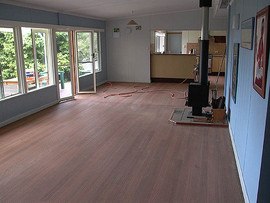 1 Sanding: Process of removing the top surface of a material, such as wood, using sandpaper and/or a specialized sanding machine (for large surface areas)
1 Sanding: Process of removing the top surface of a material, such as wood, using sandpaper and/or a specialized sanding machine (for large surface areas)
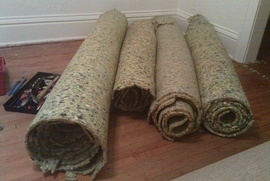 2 Pads: A cushion placed under a carpet to absorb impact, thus extending the life of the carpet
2 Pads: A cushion placed under a carpet to absorb impact, thus extending the life of the carpet
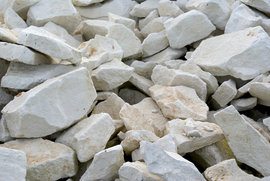 3 Limestone: A type of sedimentary rock, made up of mostly calcite and aragonite
3 Limestone: A type of sedimentary rock, made up of mostly calcite and aragonite
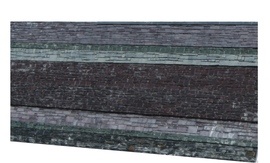 4 Slate: A fine-grained rock, typically bluish-gray in color, that can easily be split into thin layers and is commonly used as a roofing material
4 Slate: A fine-grained rock, typically bluish-gray in color, that can easily be split into thin layers and is commonly used as a roofing material
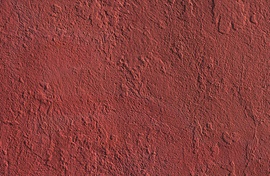 6 Renders: A type of durable plaster finish made of aggregates, a binder, and water (traditionally Portland cement, sand, and water) used on masonry, walls, ceilings, and decorative moldings
6 Renders: A type of durable plaster finish made of aggregates, a binder, and water (traditionally Portland cement, sand, and water) used on masonry, walls, ceilings, and decorative moldings
How much does it cost to polish a stone floor in my city?
Cost to polish a stone floor varies greatly by region (and even by zip code). To get free estimates from local contractors, please indicate yours.



